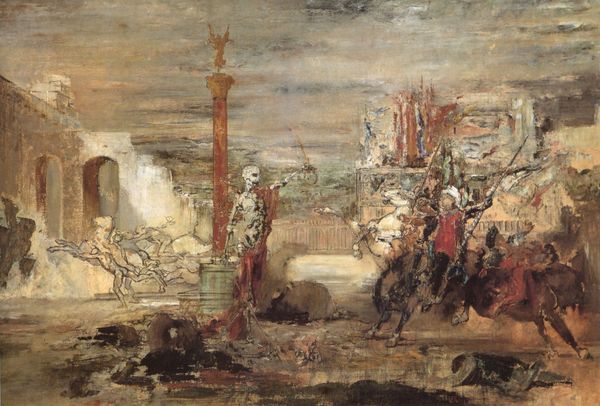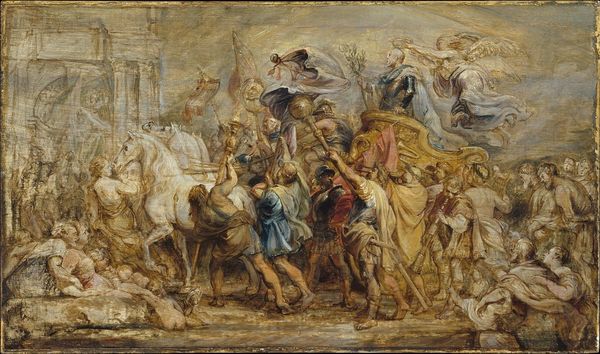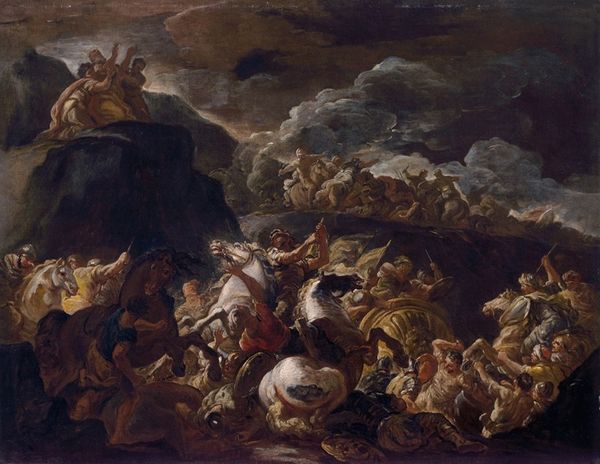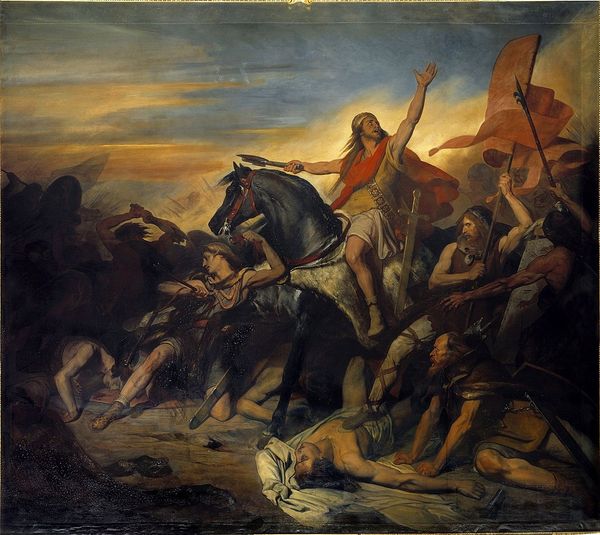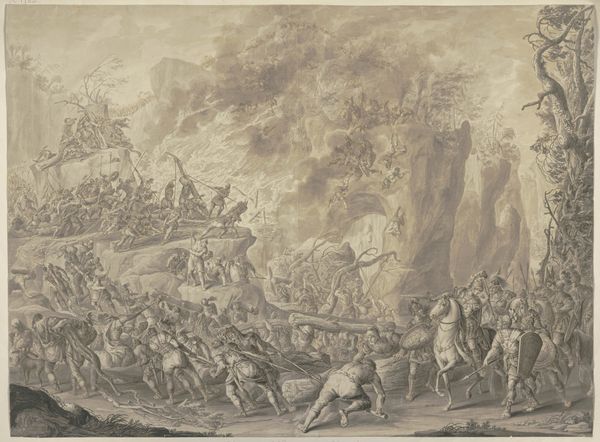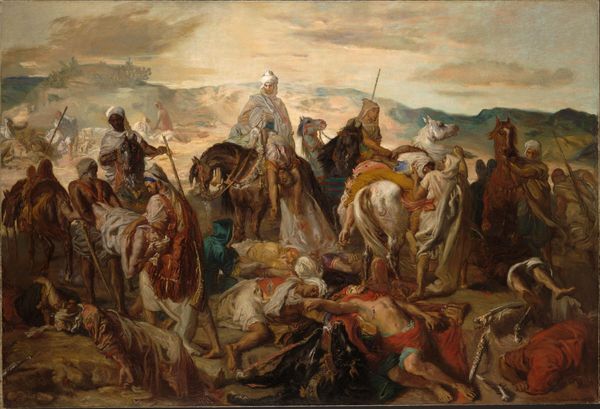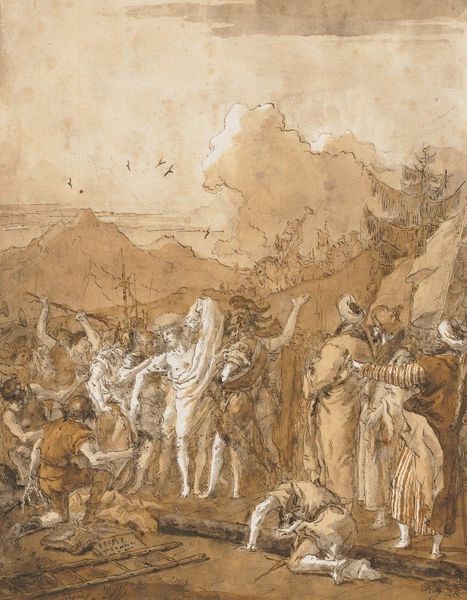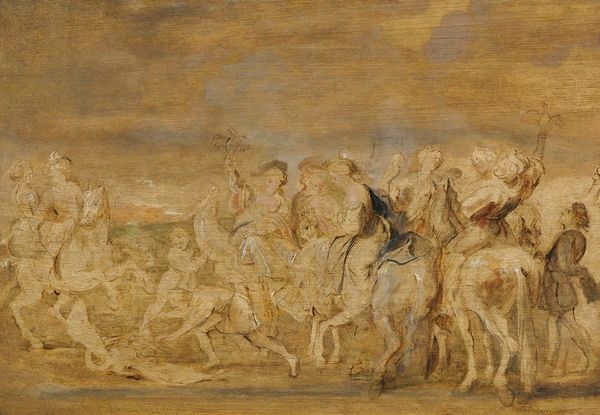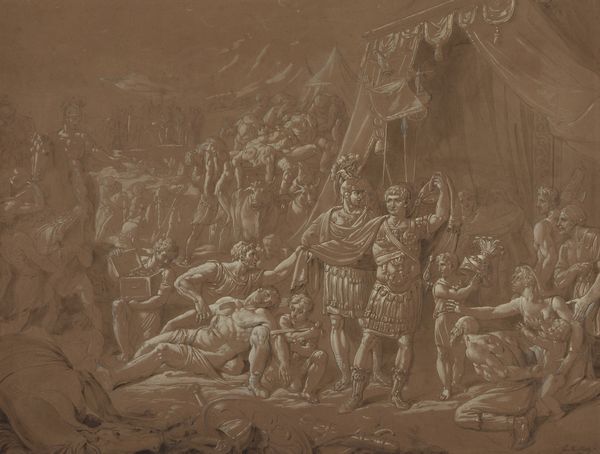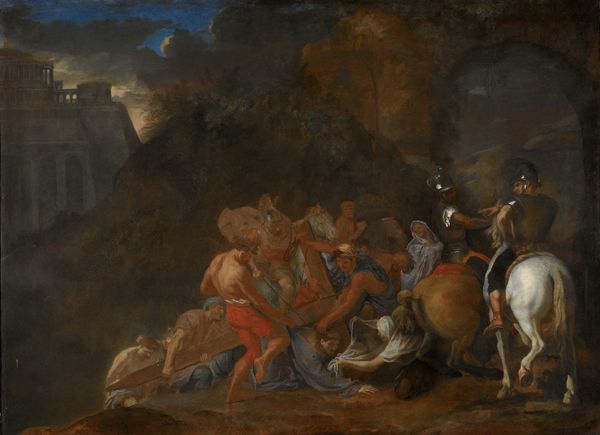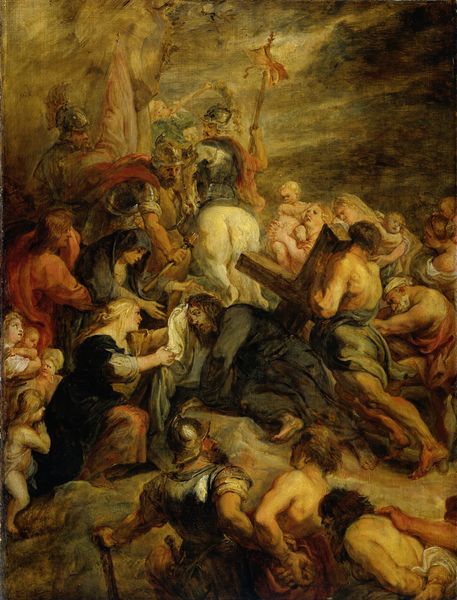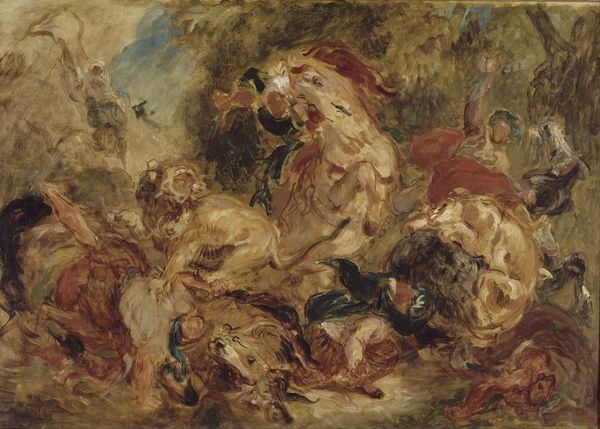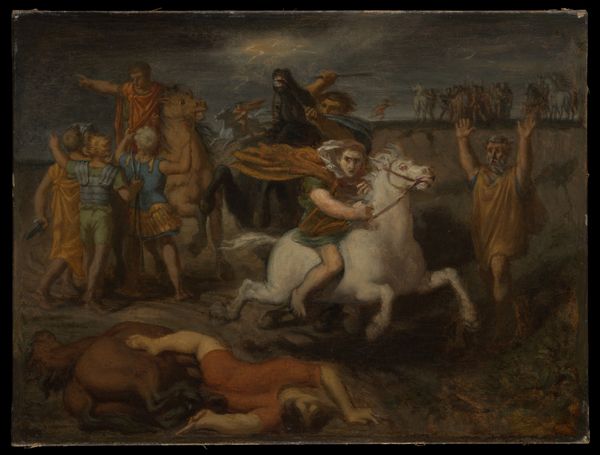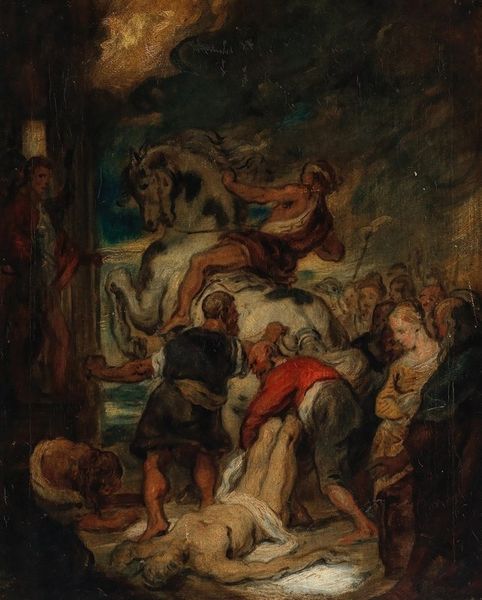
painting, oil-paint
#
narrative-art
#
baroque
#
painting
#
oil-paint
#
landscape
#
figuration
#
oil painting
#
history-painting
Copyright: Public Domain: Artvee
Curator: Here we have Rembrandt van Rijn's "The Concord of the State," believed to have been painted between 1635 and 1641, an oil on canvas rendering brimming with narrative potential. Editor: Wow, it hits you like a dream half-remembered. Kind of murky, restless—like history struggling to emerge. Is it just me, or is there a slight scent of horse about it? Curator: Note the chiaroscuro at play, a masterful handling of light and shadow, characteristic of the Baroque, to establish dramatic focal points within a composition rich in figuration. Observe how the receding planes guide the eye through the implied spatial depth. Editor: You’ve got that push and pull, the figures surging forward from a deeply shadowed backdrop. It's all controlled chaos, a delicate dance between order and anarchy. The subdued palette—golds, browns, the greys—only amplify the inherent tension, right? Curator: Precisely. And if you study the symbolic arrangement, you might agree this allegory of the state hinges on the convergence of militaristic power with the subjugation of earthly desires, represented by the chained, recumbent canine. Semiotically, a potent symbol. Editor: So, the chained dog—that’s fascinating. Makes you think, doesn't it? Like our base instincts forever leashed to this... well, whatever "state" is. But Rembrandt throws in these odd, dreamlike touches, which muddy the message delightfully. Curator: We cannot ignore the material reality either, its layered paint application, particularly evident in the rendering of textiles and armaments. See how light is refracted—subtle chromatic shifts accentuating depth and volume. Editor: It feels both grand and incomplete. Like looking at a fragment of something larger. Is it just a history painting, an allegorical representation of governance? Or is there something deeper here? Some nagging philosophical concern, something personal to Rembrandt? Curator: Indeed. Reflect on the complexities of symbolic meaning in visual representation as demonstrated through history, and its interpretation across time. Editor: It reminds me that we're always somewhere in between stories. Each viewing shifts a bit. Every time you engage, its essence reforms like water swirling in your palms. Thank you, Rembrandt.
Comments
No comments
Be the first to comment and join the conversation on the ultimate creative platform.
